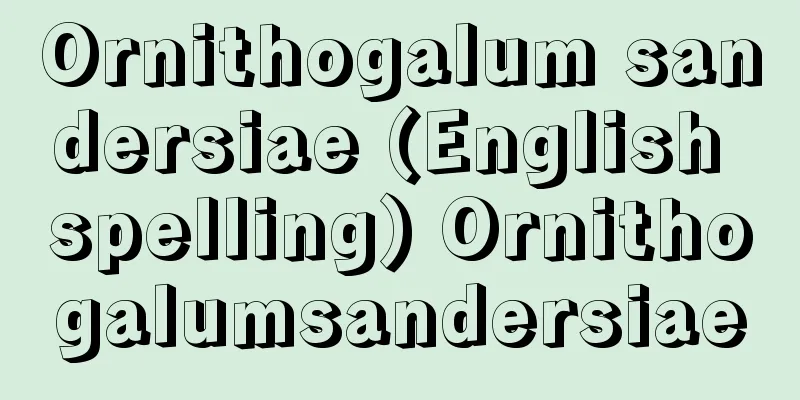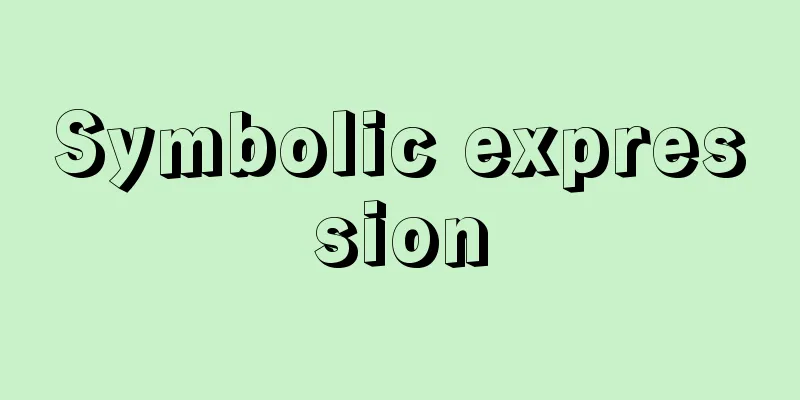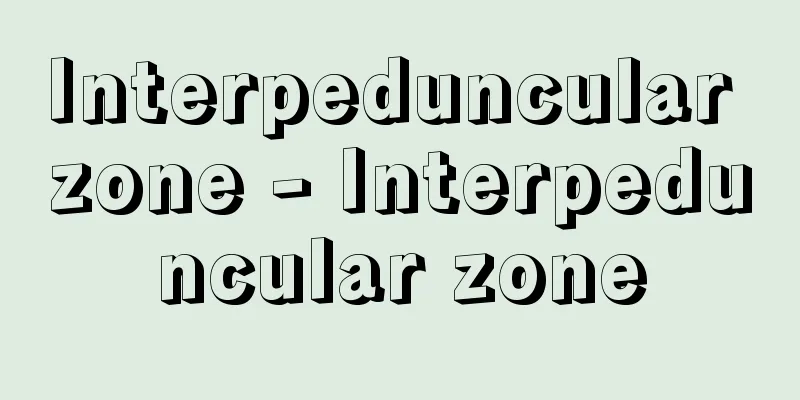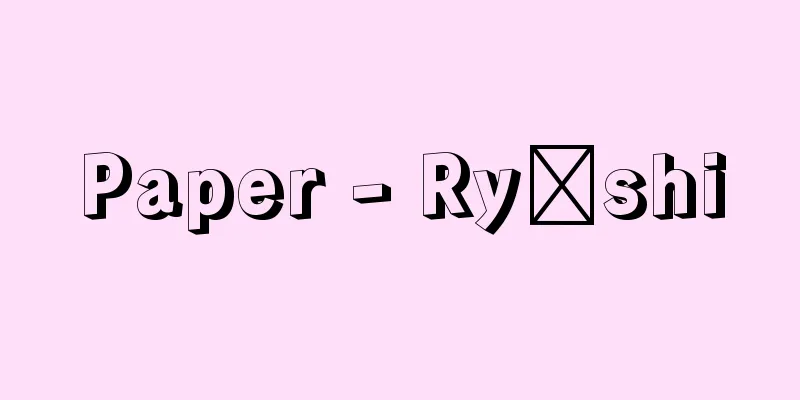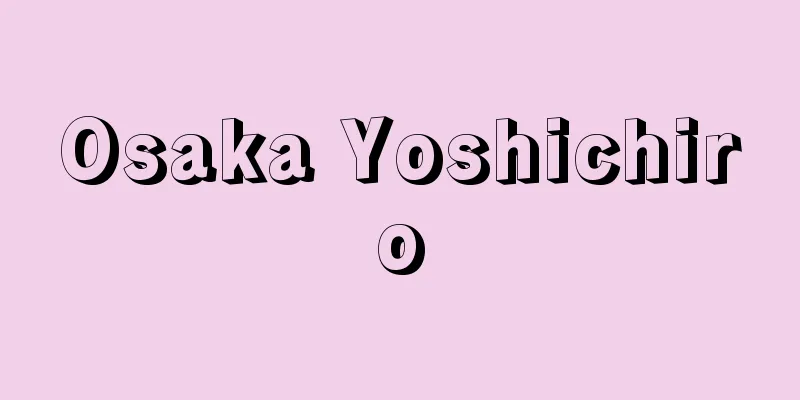Cabinet - English

|
The highest deliberative body in charge of the country's administrative power. Politically, it is usually called the government. The word cabinet is a translation of the English word cabinet, but its origin refers to the office of the prime minister in the Ming and Qing dynasties of China. In England, which has the oldest history of cabinets, five favorite nobles who had influence in parliament were selected during the reign of Charles II (late 17th century) and important state affairs and parliamentary measures were entrusted to them. It is said that these five people met and discussed in secret in a small room deep within the palace, and the group of people who met there (the cabinet) came to be called a cabinet. Today, many countries have a cabinet as a national institution in charge of administrative power, but its powers and organization vary depending on the historical and political background of each country. [Susumu Komatsu] Cabinet Systems in Foreign CountriesEnglandBritain, known as the birthplace of the parliamentary cabinet system, also has a long history of cabinets. Its origins are said to date back to the Norman dynasty in the 11th and 12th centuries, when the early cabinets served as advisory bodies to the king, providing advice and assistance on policy decisions and implementation in national politics. As parliamentary politics developed, the cabinet transformed from an auxiliary body to the monarchy to an institution in charge of the country's administrative power under the control of parliament. With the Glorious Revolution of 1688, the cabinet had to obtain the support of the majority party in parliament, and the king began to appoint members of parliament as ministers. After that, ministers who were responsible to the king came to be jointly responsible to parliament, and in the case of the Pitt Young government formed in 1783, the king exercised the right of dissolution in response to a vote of no confidence in the House of Commons, and the British cabinet followed the path of a parliamentary cabinet system. After the 1832 reform of the electoral law, Parliament's control over the Cabinet increased, and it was described by Bagehot as "a Cabinet like a committee of Parliament." However, the development of party politics due to the reform of the electoral law from the second half of the 19th century and the increased role of the Cabinet in the welfare state system made the Cabinet's dominance over Parliament more pronounced. The leader of the party that won the majority in the election becomes Prime Minister, and the Cabinet is formed mainly from the members of the House of Commons belonging to that party. Therefore, with a party base in Parliament as a background, the Cabinet plays a leading role in all major activities of Parliament, such as submitting bills, deciding the agenda, and planning financial and other policies. Furthermore, during both world wars, leaders with political decision-making and action power were needed to carry out the war, and with the emergence of Prime Ministers who enjoyed popular support, such as Churchill, the Prime Minister's position in the Cabinet has been significantly strengthened today. As a result, it is even said that British politics has shifted from Cabinet politics to Prime Minister politics. The British Cabinet consists of the Prime Minister and around 20 Ministers, in addition to the Prime Minister there are around 30 to 40 Non-Cabinet Ministers who do not participate in Cabinet meetings. [Susumu Komatsu] FranceFrance has traditionally been known as a parliamentary country with weak executive power. During the Third Republic, about 100 cabinets were formed, but nearly half of them lasted less than six months, and during the Fourth Republic, 18 cabinets were formed, but the average lifespan is said to be about eight months. The causes of the weakness and instability of cabinets include the difficulty of the executive branch exercising its right to dissolve parliament, and the extremely weak party foundation of cabinets due to the division of small parties. The most distinctive feature of the current Fifth Republic Constitution (De Gaulle Constitution) is that it has made the president the central organ and driving force of the political system. The president is given great constitutional powers, such as the ability to freely appoint the prime minister, the power to dissolve parliament, and the right to "quasi-absolute power" for a certain period of time in the event of a national crisis as an exceptional situation. The cabinet is formed under the authority of the president and is the body that decides and handles national affairs. In other words, it can be said that the president has governing power, and the prime minister has executive power in the narrow sense. The prime minister and cabinet members are prohibited from holding concurrent positions as members of the National Assembly, but they attend and speak in both houses and are accountable to the National Assembly. France's current cabinet system is a unique system that is different from that of the United Kingdom or that of the Fourth Republic, and is described as "a strange mixture of parliamentary cabinet system and presidential system" (Hitchner, Harvoord). [Susumu Komatsu] AmericaThe American political system, based on the principle of separation of powers, has adopted a presidential system to which executive power is entrusted. The United States also has something called a cabinet, but unlike the cabinet in parliamentary systems, which is a deliberative body centered on the prime minister, it is a conference body presided over by the president and is made up of 12 ministerial secretaries who are freely appointed and dismissed by the president. This is a customary system not stipulated in the constitution, and cabinet members have no legal status or authority. Furthermore, while each cabinet member is responsible to the president, they are not jointly responsible as a deliberative body. The American cabinet is, so to speak, an institution that advises the president, and in the United States, the equivalent of the cabinet in parliamentary systems is the president. [Susumu Komatsu] Japan's Cabinet SystemHistoryThe cabinet system was introduced in Japan in 1885 (Meiji 18). It was thought that the Dajokan system was not suitable for the administration of national affairs in Japan, which had finally developed into a modern nation, and was also designed to improve the central administrative organization after the opening of the National Diet four years later. The early cabinets were based on the principle of "aloofness," that is, that the cabinet of the Emperor should be aloof from the Diet and political parties. However, the government could not remain aloof forever from the Diet, which was gradually gaining power by using its right to "sponsor" laws and budgets, and after the Sino-Japanese War, the government changed its policy to make concessions and cooperate with the leading political parties in the Diet. In the Taisho era, there were two constitutional protection movements (pursuing the British-style cabinet system as the "normal way of constitutional government" and strengthening the voice of political parties in the Diet), and after the Hara Takashi cabinet, party cabinets continued, leading to the so-called party politics of Taisho democracy. However, parliamentarianism was the norm under constitutional government only until the early Showa period, when the Great Depression that began in 1929 (Showa 4) and the Manchurian Incident in 1931 led Japan towards a wartime regime dominated by totalitarianism and militarism, bringing an end to party politics. Eventually, the cabinet was dominated by military or pro-military bureaucrats and politicians, and the military came to directly control politics. This situation continued until the end of World War II in 1945. Then, with the enactment of the Constitution of Japan, Japan's cabinet system changed to one that was fundamentally different from that under the Meiji Constitution. [Susumu Komatsu] Characteristics of the current cabinet systemThe cabinet system under the Constitution of Japan differs from that under the Meiji Constitution in the following ways: First, it became a constitutional institution on a par with the Diet and the courts as the highest deliberative body in charge of executive power, second, it abandoned its detached character in relation to the Diet and adopted a parliamentary cabinet system, and third, it gave the Prime Minister a head-of-state status (Constitution, Chapter 5, Articles 65 to 75). [Masaaki Ikeda] Position and authorityThe Cabinet retains some characteristics of the Meiji Constitution in that it acts as an advisory body to the Emperor and gives advice and approval to the Emperor on "acts in matters of state." However, a major feature of the new Constitution is that it now has jurisdiction over a wide range of matters that were previously under the Emperor's "sovereign prerogative," and performs administrative duties completely independent of the Emperor. In other words, Article 73 of the Constitution stipulates that the Cabinet shall perform general administrative duties, such as (1) executing the laws and managing the affairs of state, (2) handling foreign relations, (3) concluding treaties, (4) preparing the budget and submitting it to the Diet, (5) managing affairs related to government officials, (6) enacting cabinet orders, and (7) deciding on pardons. Article 65 of the Constitution stipulates that "the executive power shall be vested in the Cabinet," meaning that the Cabinet is the highest organ of administrative power, and in addition to performing general administrative duties beyond those of the Cabinet itself, it also directs and supervises each administrative department. However, this does not mean that the Cabinet has a monopoly on all administrative powers, and for state functions that can be considered to belong to administrative powers but that are considered intrinsically incompatible with control by the Diet, the administrative organs that perform those functions are independent of the Cabinet. Examples of so-called administrative commissions include the National Personnel Authority, which is involved in personnel administration, the Fair Trade Commission, which requires specialized technical knowledge, and the Central Labor Relations Commission, which must reconcile conflicting interests. However, with these exceptions, the Cabinet came to hold in its hands the broad administrative powers that were previously the prerogative of the Emperor under the Meiji Constitution, and in reality it wielded enormous power. According to the principles of the Constitution, the Cabinet is placed under the superiority of the Diet, but by adopting a parliamentary cabinet system (Articles 66 to 69 of the Constitution), the Cabinet joins hands with the majority party in the House of Representatives and takes the lead over the gigantic bureaucratic apparatus, giving it the status and authority of a de facto central organ for all aspects of national politics. However, in reality, policy formulation would be difficult without the support of the bureaucratic apparatus, which possesses vast amounts of information, and so the two parties depend on each other, leading to the Cabinet sometimes being described as being led by the bureaucrats. [Masaaki Ikeda] Cabinet Organization and ActivitiesThe Cabinet is composed of the Prime Minister, who is its head, the other Ministers of State (Administrative Ministers), and those within a certain number of Ministers of State (Ministers without Portfolio) (Article 66, Clause 1 of the Constitution, Article 2 of the Cabinet Law). Furthermore, the majority of them must be Diet members (Article 67, Clause 1 and Article 68, Clause 1 of the Constitution). In the past, there have been cases where the Minister of Education and the Minister of Justice were chosen from among non-Diet members, but this provision aims to thoroughly implement the spirit of the parliamentary cabinet system and prevent the problems of a detached, bureaucratic cabinet, so it is interpreted that the Constitution expects all members to be Diet members. Furthermore, it is clearly stated that they must be civilians (Article 66, Clause 2 of the Constitution). [Masaaki Ikeda] Cabinet meetingThe Cabinet performs its duties through Cabinet meetings, which are meetings of all Cabinet Ministers. Cabinet meetings are convened and presided over by the Prime Minister when necessary, and each Minister may present a matter and request a Cabinet meeting (Cabinet Law, Article 4). The agenda of Cabinet meetings is said to follow traditional custom, but the important points are that the contents are kept secret and that agendas are decided unanimously. It is the important duty of each Minister to maintain the secrecy of Cabinet meetings, and they must be kept secret even if they cease to be Ministers. In addition, while agendas in public deliberative bodies are usually decided by a majority vote, Cabinet meetings in particular must be decided unanimously because the Cabinet must act in a unified manner, being accountable to the Diet in solidarity. However, unanimity usually gives undue weight to the voices of the minority, which may weaken the unity within the Cabinet. Therefore, the Constitution gives the Prime Minister the power to dismiss Ministers of State to prevent this harm. There are regular Cabinet meetings that are held on a fixed day each week, and extraordinary Cabinet meetings that are convened as necessary. In principle, all Ministers meet in person to hold these meetings, but as a convenient method, "rotating Cabinet meetings" where documents are circulated are also permitted. [Masaaki Ikeda] Cabinet SecretariatIt is an auxiliary organ of the Cabinet established to assist the Cabinet in its affairs, and its head is the Chief Cabinet Secretary. [Masaaki Ikeda] Parliamentary Cabinet System and Cabinet ResponsibilityThe aloof cabinet of the Meiji Constitution has been fundamentally changed in the current Constitution to a parliamentary cabinet system. That is, the Diet appoints the Prime Minister (Article 67 of the Constitution), and the Cabinet is jointly responsible to the Diet (Article 66, paragraph 3 of the Constitution). The existence of the Cabinet is subject to a vote of confidence from the House of Representatives, and the Cabinet has the power to dissolve the House of Representatives (Article 69 of the Constitution). The adoption of the parliamentary cabinet system was due to the democratic requirement that the Cabinet be under the control of the Diet, and therefore that both legislative and executive powers be under the supervision of the people. In any case, executive power is to be unified by the Cabinet as a deliberative body, and the responsibility for the exercise of that power is to be borne by the Cabinet as a whole, not by the Prime Minister or the Ministers of State alone, to the Diet. This responsibility is considered to be a political responsibility, not a legal one, and therefore, in order for the Cabinet to fulfill its responsibilities democratically, it is necessary for the Diet, and by extension the people, to evaluate and respond based on sound political insight. [Masaaki Ikeda] ResignationThe Cabinet may resign en masse at any time, but there are three cases in which it must resign en masse: (1) when a motion of no confidence in the Cabinet is passed in the House of Representatives, or when a motion of confidence in the Cabinet is rejected (Article 69 of the Constitution); (2) when a new Diet is convened after a general election for the House of Representatives (Article 70); and (3) when the post of Prime Minister is vacant (Article 70). The resignation of the Prime Minister always accompanies the resignation of the Cabinet, due to the need for Cabinet unity, but this is usually called a political upheaval. The Prime Minister cannot be dismissed. When the Cabinet resigns en masse, the Diet must nominate a Prime Minister before any other matters (Article 67, paragraph 1 of the Constitution), and until a new Prime Minister is appointed, the previous Cabinet will continue to perform its duties (Article 71). [Masaaki Ikeda] "Cabinet Theory" by Yamazaki Tansho (1953, Gakuyo Shobo) [References] | | | | | |Source: Shogakukan Encyclopedia Nipponica About Encyclopedia Nipponica Information | Legend |
|
国の行政権を担当する最高の合議機関。政治的に普通、政府と称される。内閣ということばは、英語のcabinetの訳語であるが、その語源は、中国の明(みん)・清(しん)時代の宰相の官署をさしたものである。内閣についてもっとも古い歴史を有するイギリスでは、チャールズ2世の時代(17世紀後半)に議会にも影響力を有する5人の寵臣(ちょうしん)貴族を選んで重要な国務や議会対策を委任したが、この5人が隠密裏に宮廷の奥深い小部屋cabinetで会合し、協議を行ったところから、そこで会議を行う人々の集まり(内閣)をcabinetとよぶようになったといわれている。今日、行政権を担当する国家機関として内閣を設ける国は多いが、その権能・組織はそれぞれの国の歴史的・政治的背景の違いに応じて多様である。 [小松 進] 諸外国の内閣制度イギリス議院内閣制の母国ともよばれるイギリスは、内閣についても長い歴史をもっている。その起源は11~12世紀のノルマン王朝の時代にまでさかのぼることができるといわれるが、初期の内閣は国王の諮問機関として国政上の政策決定・執行について助言・補佐するものであった。やがて議会政治が発達するにつれて、内閣は王権の補佐機関から議会の統制の下に国の行政権を担当する機関へと変容する。1688年の名誉革命により内閣は議会の多数党の支持を得なければならなくなり、国王は議会の議員を大臣に任命するようになった。その後、国王に対して責任をとっていた大臣が連帯して議会に対し責任を負うようになり、1783年に成立した小ピット内閣のとき、下院の不信任決議に対し解散権を行使し、イギリスの内閣は議院内閣制の道をたどるのである。1832年の選挙法改正後内閣に対する議会の統制力が増大し、「内閣は議会の一委員会のごとき存在である」(バジョット)と評されることになるが、19世紀後半からの選挙法改正により政党政治が発達したこと、また福祉国家体制における内閣の役割が増大したことによって、内閣の議会に対する優位の傾向が顕著となった。内閣は選挙において多数を占めた政党の党首が総理大臣となり、その政党所属の下院議員を中心に組閣される。したがって、議会における政党的基盤を背景に、法律案の提出、議事日程の決定、財政その他の施策の立案など議会の主要な活動すべてにおいて、内閣は指導的役割を演ずるのである。さらに、両大戦を通じて戦争遂行のため、政治的決断力・行動力を備えた指導者が望まれ、チャーチルに代表されるような国民的支持を受けた首相が現れたこともあって、今日では、内閣における総理大臣の地位が著しく強化された。そこで、イギリスの政治は内閣政治から内閣総理大臣政治に移ったとさえいわれるようになっている。イギリスの内閣は、首相を中心に20名前後の大臣により構成されるが、そのほかに閣議に加わらない閣外大臣が30~40名ぐらい任命されている。 [小松 進] フランスフランスは伝統的に議院制の国、執行府の権力の弱い国として知られてきた。第三共和政では約100の内閣が成立したが、その半数近くは半年以下の寿命であり、第四共和政では18の内閣が誕生したが、平均寿命は約8か月であったといわれる。内閣の弱体と不安定の原因としては、行政府による議会解散権の行使が困難であったこと、小党分立のため内閣の政党的基礎がきわめて脆弱(ぜいじゃく)であったことなどがあげられている。 現在の第五共和政憲法(ドゴール憲法)の最大の特色は、政治制度の中心的機構、その推進力を大統領とした点にある。大統領は、首相を自由に任命することができ、議会を解散する権能を有し、例外事態権として国家的危機に際して、一定期間「準絶対権」をもつなど憲法上強大な権能を付与されている。内閣はこの大統領の権威のもとに成立し、国政を決定し処理にあたる機関である。つまり、大統領が統治権力をもち、首相が狭義の執行権を保持しているといえる。首相および閣僚は国会議員との兼職を禁止されているが、両議院に出席して発言し、国会に対して責任を負う。フランスの現行内閣制はイギリスのそれとも第四共和政までのそれとも異なった「議院内閣制と大統領制との奇妙な混合」(ヒッチナー、ハーボード)といわれる独特の体制である。 [小松 進] アメリカ権力分立の原理を基礎とするアメリカの政治制度では、大統領制が採用され、これに行政権がゆだねられている。アメリカにも内閣cabinetといわれるものが存在するが、それは議院内閣制の国における首相を中心とした合議体としての内閣と異なり、大統領が自由に任免する12名の各省長官によって構成され、大統領が主宰する会議体を意味する。これは憲法に規定のない慣行上の制度であり、閣員はなんら法的地位も権限ももたない。また各閣員が大統領に対して責任を負うが、合議体として連帯責任を負うものではない。アメリカの内閣は、いわば大統領に助言する機関であり、議院内閣制をとる国の内閣に相当する機関は、アメリカにおいては大統領である。 [小松 進] 日本の内閣制度沿革日本に内閣制度が導入されたのは1885年(明治18)である。それまでの太政官(だじょうかん)制がようやく近代国家として発展してきた日本の国政運営に適合しないと考えられ、また、4年後の国会開設後の中央行政組織の整備のため、ヨーロッパ先進国、とくにプロイセンを範として構想されたものである。初期の内閣は、天皇の内閣として議会・政党に対し超然たるべしとの「超然主義」を基本とした。しかし、法律・予算についての「協賛」権を武器にしだいに力を伸ばしてきた議会から政府はいつまでも超然としていることはできず、日清(にっしん)戦争を境に議会の有力政党への譲歩・連携の方針にかわった。大正時代に入り、2回の護憲運動(イギリス型の内閣制を「憲政の常道」として追求し、議会における政党の発言権を強化しようとするもの)があり、原敬(たかし)内閣以後政党内閣が続き、いわゆる大正デモクラシーにおける政党政治が行われることになる。しかし、議会主義がともかくも憲政の常道として行われたのは昭和初期までであり、1929年(昭和4)に始まる世界恐慌、31年の満州事変を契機に日本は全体主義・軍国主義の支配する戦時体制に向かい、政党政治は終わりを告げることになった。やがて、内閣は軍部や親軍部の官僚・政治家によって占められ、軍部が直接政治を支配することとなった。こうした状態は1945年の第二次世界大戦の終戦まで続いた。そして日本の内閣制度は、日本国憲法の制定により、明治憲法でのそれとは根本的に異なったものに変わるのである。 [小松 進] 現在の内閣制度の特色日本国憲法のもとにおける内閣制度は、明治憲法でのそれと異なり、次のような特色をもっている。その第一は、行政権を担当する最高の合議体として、国会、裁判所と並ぶ憲法上の機関となったこと、第二は、国会との関係において、超然的性格を捨て、議院内閣制をとったこと、第三は、内閣総理大臣に首長的地位を与えたこと、があげられる(憲法5章65条~75条)。 [池田政章] 地位・権限内閣は、天皇の補佐機関として天皇の「国事に関する行為」に助言と承認を与える点では、明治憲法的な性格が残されてはいるが、大きな特色として、かつて天皇の「大権」に属していた広範な事項を自らの所管とし、天皇とはまったく独立に、行政上の職務を行うこととなった。すなわち憲法第73条には、(1)法律の執行と国務の総理、(2)外交関係の処理、(3)条約の締結、(4)予算の作成とその国会への提出、(5)官吏に関する事務の掌理、(6)政令の制定、(7)恩赦の決定、など一般行政事務を行うことが規定された。「行政権は、内閣に属する」という憲法第65条の規定は、内閣が行政権の最高機関であり、自ら以上の一般行政事務を行うほか、行政各部を指揮・監督することを意味する。 しかし、すべての行政権の独占を意味するわけではなく、行政権に属するとみるべき国家作用でも、その本質上、国会による統制になじまないと思われるものについては、その職務を行う行政機関は内閣から独立している。いわゆる行政委員会とよばれるもので、人事行政に関与する人事院、専門技術的知識が要求される公正取引委員会、対立する利害の調整を必要とする中央労働委員会など各種の例があげられる。しかし、これらを例外として、内閣は、明治憲法下の天皇の大権に属した広範な行政権を手中に収めることになって、実際には強大な権力をもつことになった。 憲法の原則のうえでは、内閣は、国会の優越的地位のもとに置かれてはいるが、議院内閣制をとること(憲法66条~69条)によって、衆議院での多数党と手を握り、巨大な官僚機構を指導する立場にたつことになって、国政全般に関する実質上の中枢機関としての地位と権能が与えられた。しかし、実際には膨大な情報を有する官僚機構の支えがなければ政策立案がままならぬため、お互いにもちつもたれつの関係があり、ときに官僚主導と評されることがある。 [池田政章] 内閣の組織と活動内閣は、その首長である内閣総理大臣、およびその他の国務大臣(行政大臣)と、国務大臣の定数以内のもの(無任所大臣)により組織される(憲法66条1項、内閣法2条)。またその過半数は国会議員でなければならない(憲法67条1項・68条1項)。これまで文部大臣や法務大臣などが議員以外から選ばれた例があるが、この規定は議院内閣制の趣旨を徹底させ、超然・官僚内閣の弊を防止するところにねらいがあるので、憲法はむしろ全員が国会議員であることを期待していると解されている。さらにそれらは文民でなければならない(憲法66条2項)と明示している。 [池田政章] 閣議内閣は職務を行う場合、全国務大臣の会議である閣議による。閣議は必要に応じて内閣総理大臣が招集し、これを主宰し、各大臣は、案件を提出して閣議を求めることができる(内閣法4条)。閣議の議事については従来の慣習によるとされているが、重要な点として、その内容が秘密とされていること、議事が全会一致で決せられることである。閣議の秘密を守ることは、それに列席する各大臣の重大な義務で、大臣をやめてもその秘密は守らなければならないとされている。また、公の合議体における議事は過半数の賛成で決するのを通例としているが、閣議についてはとくに全会一致で決すべきものとされているのは、内閣が連帯して国会に責任を負い、統一的な行動をとる必要があるためである。ところで、全会一致主義は通常、少数者の発言に過当な重さを与え、閣内の統合力が弱くなるおそれがある。そこで憲法は、内閣総理大臣に国務大臣の罷免権を与え、この弊害を防ぐことにしている。 閣議には、毎週の定日に開かれる定例閣議と必要に応じて招集される臨時閣議とがあり、各大臣が現実に集会してなされるのが原則であるが、便法として書類回付による「持回り閣議」も認められている。 [池田政章] 内閣官房内閣の事務を助けるために置かれる内閣の補助機関であり、その長が内閣官房長官である。 [池田政章] 議院内閣制・内閣の責任明治憲法時代の超然内閣は、現行憲法において根本的な変革が加えられ、議院内閣制になった。すなわち、国会が内閣総理大臣を指名し(憲法67条)、内閣は国会に対して連帯責任を負う(憲法66条3項)。内閣の存立が衆議院の信任にかけられ、内閣が衆議院の解散権をもつこと(憲法69条)が、それを具体的に示す。議院内閣制の採用は、内閣を国会の統制のもとに置き、したがって立法と行政の両権を国民の監視のもとに置く、という民主的要請によるものである。 いずれにしても行政権は合議体としての内閣に統轄され、その権限行使の責任は、総理大臣および国務大臣が単独に負うものではなく、内閣が一体として国会に対して負うものとされた。この責任は法律的責任ではなく、政治的責任であると考えられるので、それゆえ内閣の責任を民主的に果たさせるためには、国会ひいては国民の健全な政治的見識に基づく評価、反応が必要であると考えられる。 [池田政章] 総辞職内閣はいつでも総辞職することができるが、他方、かならず総辞職しなければならない場合として、(1)衆議院で内閣不信任案が可決され、または内閣信任案が否決された場合(憲法69条)、(2)衆議院議員総選挙後に新国会が召集された場合(70条)、(3)内閣総理大臣が欠けたとき(70条)の3項目が定められている。総理大臣の辞職は、内閣の一体性の要求から、つねに内閣の辞職を伴うが、普通これを政変とよんでいる。内閣総理大臣に罷免はない。内閣が総辞職したときは、国会は他のすべての案件に先だって総理大臣の指名を行い(憲法67条1項)、新しい総理大臣の任命までは、従来の内閣が引き続いてその職務を行う(71条)ことが規定されている。 [池田政章] 『山崎丹照著『内閣論』(1953・学陽書房)』 [参照項目] | | | | | |出典 小学館 日本大百科全書(ニッポニカ)日本大百科全書(ニッポニカ)について 情報 | 凡例 |
<<: Cabinet Information Bureau - Cabinet Information Bureau
Recommend
Service mark (English)
A service mark is a mark used by a person who prov...
"In Search of a New Trade Policy for Development" - In Search of a New Trade Policy for Development
…the nickname for the keynote report entitled “To...
Dragée (English spelling)
...In Japan, whiskey bonbons and liqueur bonbons,...
Dotera (robe) - Dotera
A Japanese loungewear for protection against the c...
Mount Hengshan
A small mountain range stretching from north to s...
Top dressing - Top dressing
Fertilizer applied during the growth stage of a p...
"Uramikamwa" - Uramikamwa
…Also, local schools were established in the 22nd...
Open Position
…Each state of holding is called the oversold pos...
Weigela japonica - Weigelajaponica
…[Mr. Makoto Fukuoka]. … *Some of the terminology...
Kou Zhun; K`ou Chun
[Born] Kenryu 2 (961) [Died] Tensei 1 (1023) Chine...
Vascular system
In vertebrates, it is a ductal system that, toget...
Earth Uprising
Also called "doikki." In the Muromachi p...
Kuzbass
…It is a large coalfield in the Kuznetsk Basin in...
Kwansei Gakuin Glee Club
…After that, it underwent reforms and has evolved...
Crab plover (Crab plover)
A bird of the Charadriiformes order, family Plover...


